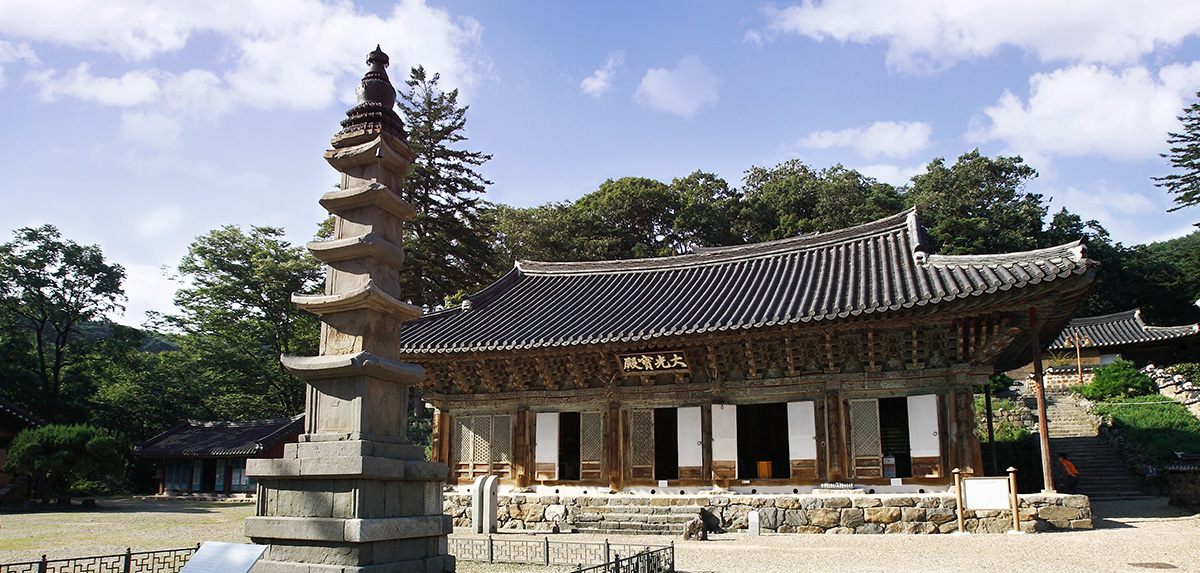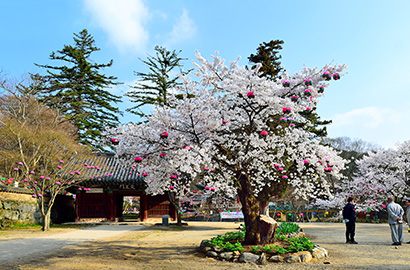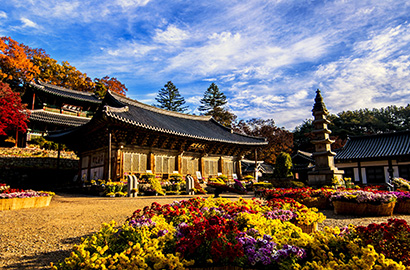



Sansa, or Buddhist mountain monasteries, refers to a group of seven temples: Magoksa in Gongju, Beopjusa in Boeun, Tongdosa in Yangsan, Buseoksa in Yeongju, Bongjeongsa in Andong, Seonamsa in Suncheon, and Daeheungsa in Haenam. Built between the 7th and 9th centuries, the temples have served as the center of Korean Buddhism and religious ceremonies in the ancient times. Each with a unique philosophy, they formed ties with other sects of Buddhism. They contain various historical artifacts and buildings as well.
They are considered invaluable as religious sites where monks and believers practiced their faith and the path to enlightenment throughout their history.
Magoksa Temple is the head temple of the sixth district of the Jogye Order of Korean Buddhism located on Taehwasan Mountain in Gongju. According to the historical records on the temple, Magoksa Temple was built in the 9th century when Seon Buddhism began to spread throughout Korea.
Magoksa Temple is characterized by a unique layout, with the northern and southern parts of the compounds divided by a stream.
The northern compound contains Daegwangbojeon, which is the main hall, and there is a five-story stone pagoda with a Tibetan-style top story built in the 14th century.
The southern compound features a small yard and contains Yeongsanjeon Hall and a place to practice Seon meditation.
The temple served as a gathering place for monk soldiers during Imjinwaeran (Japanese invasion of Korea in 1592) and sustained massive damages during the war. However, its original appearance was restored, and it gained its present-day appearance in the 18th century.

Magoksa Temple (Spring)

Magoksa Temple (Fall)
Magoksa Temple was called the Southern Art Center for having had many famous monk painters who produced Buddhist art. The legacy of Buddhist art at Magoksa Temple was carried on by Geumho, Boeung and Ilseop, and Bulmodareje is held annually in memory of the monk painters.
Magoksa Temple has ties with the well-known independence activist Baekbeom Kim Gu. After killing a Japanese military official who had been involved in the assassination of Empress Myeongseong, Kim Gu sought refuge and joined the monastic order under the Buddhist name, Wonjong. During this time, he resided at Baengnyeongam Hermitage of Magoksa Temple.
There is a juniper tree between Daegwangbojeon Hall and Eungjinjeon Hall at Magoksa Temple, and it is known to have been planted there by Kim Gu in 1946 after the liberation of Korea from Japanese colonial rule.